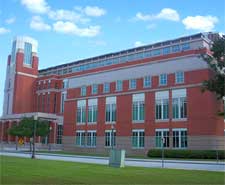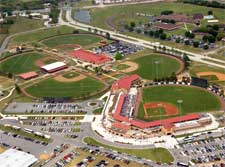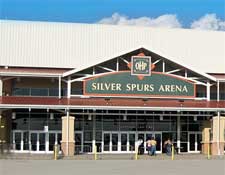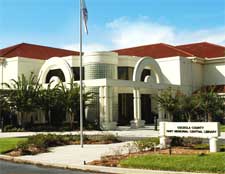Kissimmee History Facts and Timeline
(Kissimmee, Florida - FL, USA)

Centuries before Kissimmee became one of the closest communities to the Walt Disney World theme park, this central Florida region was a refuge for the Seminole Native Americans, who fled the central American state's coastal areas after Europeans arrived in Florida in the 16th century.
The cypress and pine forest-filled inland area between the Kissimmee and St. John Rivers, however, remained largely free from European settlement until the late 1600s, when Spanish missionaries arrived to convert local tribes to Christianity.

Early History
African slaves joined the Seminoles in this region prior to joining the Spanish Army, which abolished slavery in present day Florida in 1728. The area alternated between Spanish and British control for over a century, before Florida became an American state in 1845. The first permanent settlement in present day Kissimmee was a small trading post called Allendale on Lake Tohopekaliga's north bank, following the American Civil War (1861 to 1865).
Steamboat Settlement
Hamilton Disston owned a
Philadelphia saw company and saved Florida from financial disaster when he bought the land on which Allendale was built. Disston deepened the Kissimmee River in 1881 to allow steamboats to ship goods to the Gulf of Mexico. The history of modern Kissimmee began when Allendale's residents voted nearly unanimously to rename their community Kissimmee in 1883.
An 1895 freeze abruptly ended this brief boom period and forced many residents to relocate. Several buildings from this prosperous period in the history of Kissimmee, however, still stand within the city's historic district. These buildings include the stately Tucker / Ivey House and the oldest Florida hardware store still in operation, Makinson Hardware.

Walt Disney World Opening
After two subsequent winter freezes destroyed central Florida's citrus crops and railroads replaced steamships as the state's main means of transportation, Kissimmee became a small cattle ranching community. In 1950, most of the 4,300+ residents were cattle farmers or citrus packers.
The population and fortunes both increased dramatically after the 1971 arrival of the Walt Disney World, a turning event in Kissimmee history. During Walt Disney World's first decade of operation, the population of Kissimmee doubled, and again by the end of the 1980s.

Modern-Day Attractions
Today, the Walt Disney World remains Kissimmee's largest tourist attraction, but the city is also home to several golf courses, a large outdoor water park and the Loop. The outdoor Loop shopping center features numerous shops and a multiplex cinema.
The Houston Astros use the city's Osceola County Stadium as their spring training base. Kissimmee is a 15-minute drive southeast of the Orlando International Airport and is even closer to countless other
Orlando attractions. Development and tourism are now the city's main industries.
 Centuries before Kissimmee became one of the closest communities to the Walt Disney World theme park, this central Florida region was a refuge for the Seminole Native Americans, who fled the central American state's coastal areas after Europeans arrived in Florida in the 16th century.
Centuries before Kissimmee became one of the closest communities to the Walt Disney World theme park, this central Florida region was a refuge for the Seminole Native Americans, who fled the central American state's coastal areas after Europeans arrived in Florida in the 16th century.

